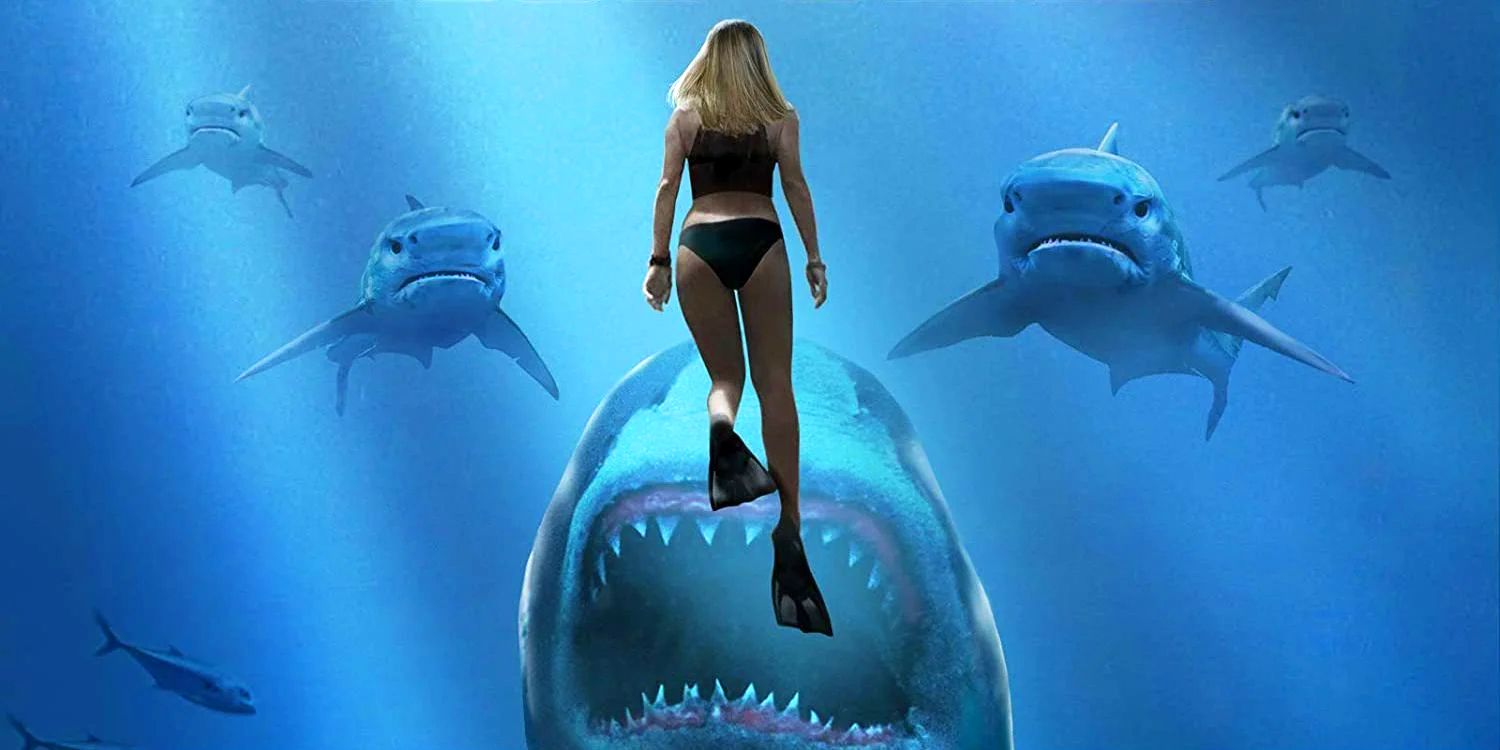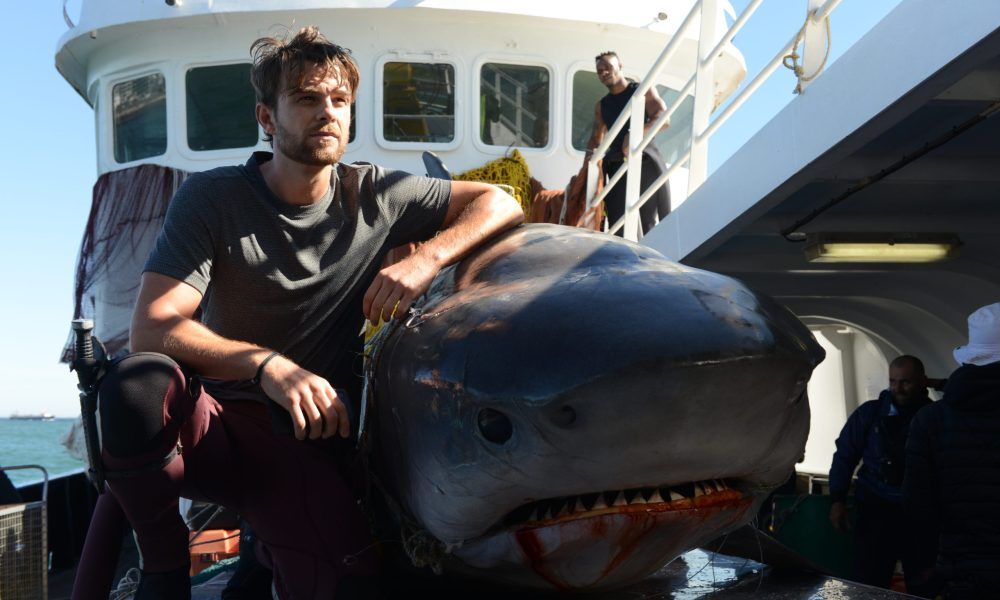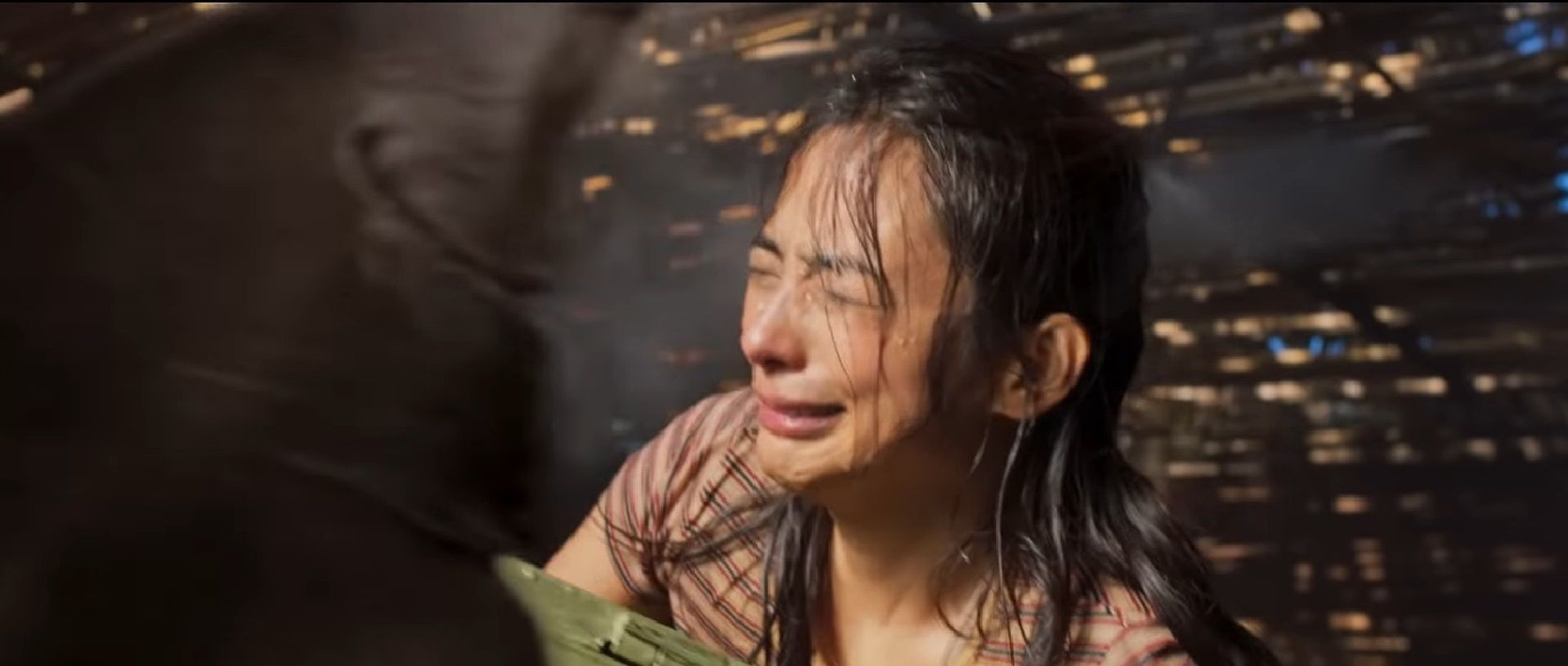It took nearly 20 years for a sequel to the 1999 shark attack thriller Deep Blue Sea to arrive, but apparently, 2018’s Deep Blue Sea 2 generated enough interest that its own sequel was produced much more quickly. The new Deep Blue Sea 3 only vaguely references the original movie, but it follows directly from the events of Deep Blue Sea 2, giving the impression that the second movie is the one that audiences are really eager to follow up on.
None of the actors or characters from either previous movie show up in this third installment, which once again takes place at a remote research facility in the middle of the ocean. This time, however, the research facility is only the target of shark attacks, not the source of them, since the genetically enhanced bull sharks from the second movie have escaped into the open ocean and are converging on the former fishing village of Little Happy, off the coast of Mozambique. Thanks to rising sea levels, Little Happy has been flooded and cut off from the mainland, and most of its inhabitants have left. A small research team led by Dr. Emma Collins (Tania Raymonde) has made the island their home base for investigating the effects of climate change on sea life.
Emma is a conservationist who preaches sympathy for sharks, and in the first scene, she playfully interacts with a great white shark she dubs Sally, even though her colleague Eugene Shaw (Emerson Brooks) warns her to be careful. The climate change angle gives Deep Blue Sea 3 the illusion of a social conscience, and the theme of science run amok is less prevalent in this movie than it was in the previous two (especially in the nonsensical, overwrought second installment). The corporate malfeasance arrives with Emma’s grad school classmate and ex-boyfriend Richard Lowell (Nathaniel Buzolic), who’s working for a pharmaceutical company trying to round up the trio of rogue super-sharks.
Scientific experiments have made these sharks smarter and more dangerous, and they now pose a threat to the entire oceanic ecosystem, in what Emma’s colleague Spin (Alex Bhat) calls “seamageddon.” There’s nothing quite as ridiculous as the scene in the second movie featuring sharks eavesdropping on a conversation between humans, but Richard is able to threaten two of the sharks by pointing a gun at the head of their brother, getting them to back down like they’re in a stand-off in a mediocre crime drama. Along with the efforts to address climate change and environmentalism, this movie shows a bit more respect for its characters than the previous installment did, and Raymonde (a veteran of TV series including Goliath, Switched at Birth and Lost) makes for a far more convincing scientist than Deep Blue Sea 2 star Danielle Savre did.
Overall, Deep Blue Sea 3 is more entertaining and competently produced than its predecessor, thanks to director John Pogue (The Quiet Ones) and screenwriter Dirk Blackman, who have a better sense of how to balance the suspense and the absurdity than the creators of the previous movie did. Neither sequel comes close to Renny Harlin’s original, of course, which had a much bigger budget and more high-profile cast, and the sequels have tried to recapture some of that magic, with meager results. As in the second movie, there’s a scene here that mimics the original’s notorious death of Samuel L. Jackson’s character in the midst of an inspirational speech, and there are a few other campy moments, although this isn’t a Sharknado-style parody of itself.
The special effects are respectable for a straight-to-VOD production, and there’s some impressive underwater cinematography that captures the beauty of actual sea life (as opposed to CGI sharks). The requisite gore is less convincing, and there are only a handful of entertainingly gruesome kills. It’s tough to top the gleeful ridiculousness of the original movie, and Pogue and Blackman don’t really try, instead settling for something more subdued, at least in the context of the gonzo shark-movie genre. Raymonde brings some grounded realism to Emma, but the rest of the characters are less engaging, and the motivations for Richard’s villainous partner don’t really make sense.
The action mostly involves characters running back and forth across the ramps and platforms that connect Little Happy’s buildings (as opposed to the cramped, flooded interior spaces of the previous movies), and there isn’t much suspense to the presence of the sharks. There are at least as many fights between humans as there are shark attacks, although the filmmakers make the most of the sharks’ sporadic screen time. It’s pretty much impossible to replicate the combination of committed performances, well-crafted special effects, amusing dialogue, and stylish violence that made the original Deep Blue Sea so entertaining, and even at its best, Deep Blue Sea 3 is just a pale imitation. It does feature a character repeatedly punching a shark in the face, though, and that counts for something.
Starring Tania Raymonde, Nathaniel Buzolic, Emerson Brooks, Bren Foster, Reina Aoi and Alex Bhat, Deep Blue Sea 3 is available Tuesday for digital purchase and August 25 on DVD and Blu-ray.



